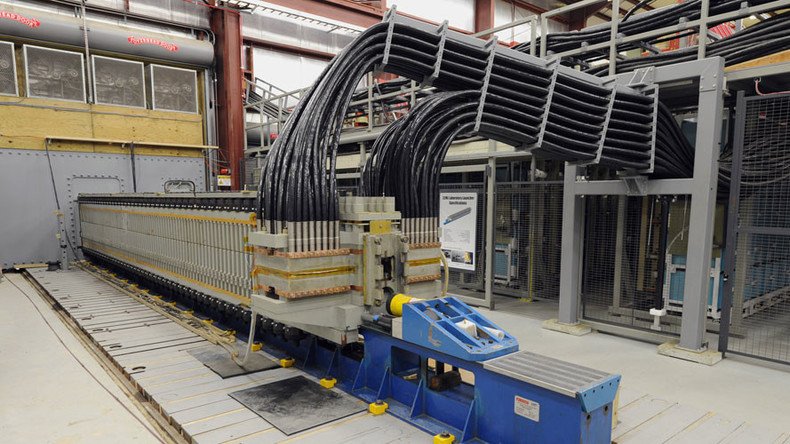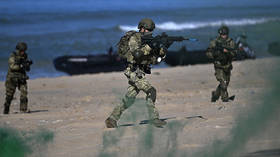Futuristic US railgun too expensive to use, similar projects in Russia – senator

The much-publicized US electromagnetic railgun is an example of the Americans aimed at dragging Russia into a new arms race, Russian senator Franz Klintsevich said. He added that Moscow will not have to respond symmetrically, despite having similar weapons in the works.
Klintsevich, first deputy chairman of Russia’s Senate committee for defense and security, has accused Washington of trying to impose a new Cold War-style arms race while saying the “supergun,” dubbed a potential game-changer by the Pentagon, is not yet an effective technological breakthrough.
Russia developing kamikaze drone that hits target & detonates - report https://t.co/06qih73HnUpic.twitter.com/5mw3aRiHQy
— RT (@RT_com) 29 мая 2016 г.
“The newspaper’s message didn’t come to us as a total surprise. Similar projects are being actively developed in Russia,” he said, referring to an article I the Wall Street Journal (WSJ). The outlet described the railgun, which is a result of a decade-long Pentagon program that cost more than half a billion dollars, as an effective tool enabling the US “to defend Baltic States against Russia, or support an ally against China in the South China Sea.”
Despite US officials’ claims that the project will be cost-effective and give US an advantage in terms of defense spending, the developers need at least $800 million in extra funding to tailor the special railgun’s projectiles to the existing types of weaponry and to work on its defense potential.
Crucially, the weapon currently requires a 25-megawatt power plant of its own to fire at all. The vast power consumption can so far be supported by only three US destroyers being built.
Klintsevich thus believes that the combat use of the gun on board a battleship is a very distinct possibility. It will still be unable to serve as a substitute for conventional weapons “even in the mid-term,” he said.
“There is a huge distance between a first test and mass production, moreover, at present, the main problem of creating a supergun – its expensiveness – isn’t solved.” the senator told RIA Novosti on Sunday.
Even if the US Navy manages to make a breakthrough its ambitious and costly project, it will not succeed in dragging Russia into another weapons race, Klintsevich stressed, suggesting that Russia may respond asymmetrically with existing capabilities.
“To not allow the change of balance of power in the world, we have lots of other possibilities. Which will be used, if necessary. In short, situation is under control.”
The railgun, or electromagnetic projectile launcher, was last week presented by the WSJ as a technology miracle able to launch relatively cheap tungsten projectiles at the speed of Mach 6 (7,400 kph, 4,600 mph), “obliterating everything in its path.” Previously, several railgun prototypes were unveiled in July 2014, as RT reported.
Due to its power source – electromagnetic rails – the new weapon is not dependent on gunpowder or explosive materials. In a promotional video the projectile can be seen trashing seven steel plates on its way through the barrel while leaving only a small 5-inch bullet hole in each of them.
The gun is said to be able to target almost any target within a 125-mile radius, be it on land or at sea, including incoming missiles. The missile defense capability, however, is theorized to be “at least a decade away.”
Pentagon is also eyeing to fit the tungsten pellets to the conventional naval guns. If successful, the Zumwalt-class missile destroyers or similar vessels could more than double their fire range, according to the cited tests.
“The Navy is on the cusp of having a tactical system, a next generation offensive weapon. It could be a game changer,” William Roper, the director of the Pentagon’s Strategic Capabilities Office, told WSJ.
Another major challenge is the guidance system, which is to be based on GPS, and the sensitive electronics that should be modernized to withstand the gravity in order not to crumble.
The end-goal of the Pentagon developers is to maintain the preeminence in the military sphere while countering the growing influence of Russia and China.
“You can’t ignore the fact that Russia has great ability to mass conventional munitions and fire them over great range. We have to be able to fight through those salvos,” said US Deputy Secretary of Defense Robert Work.














